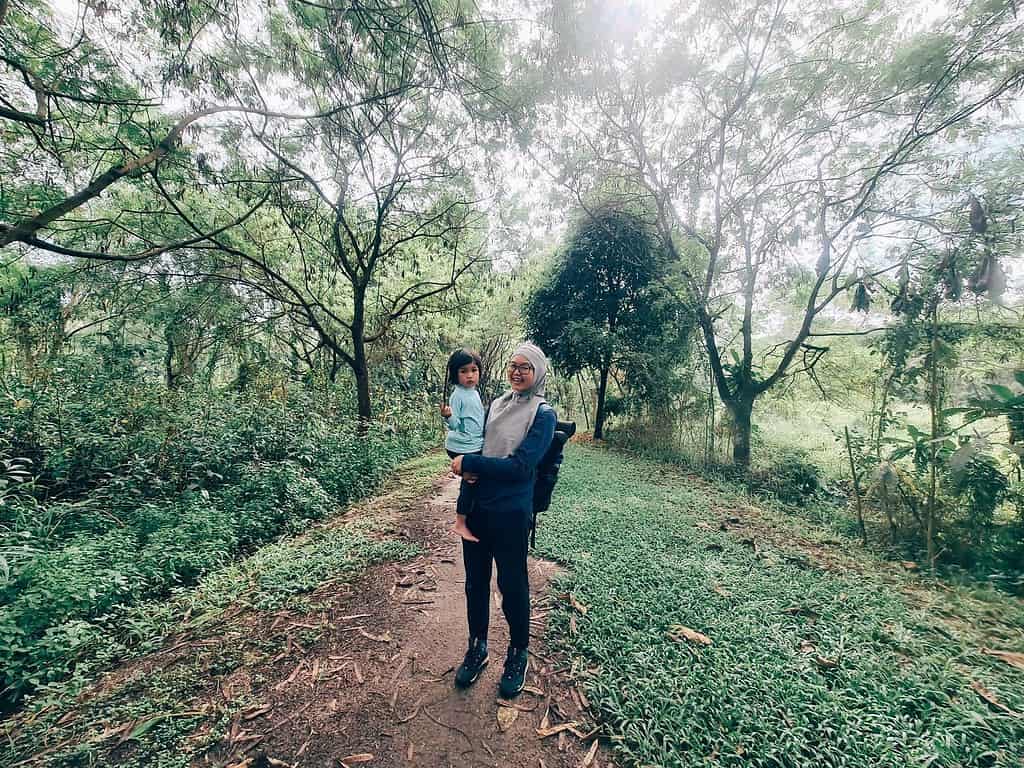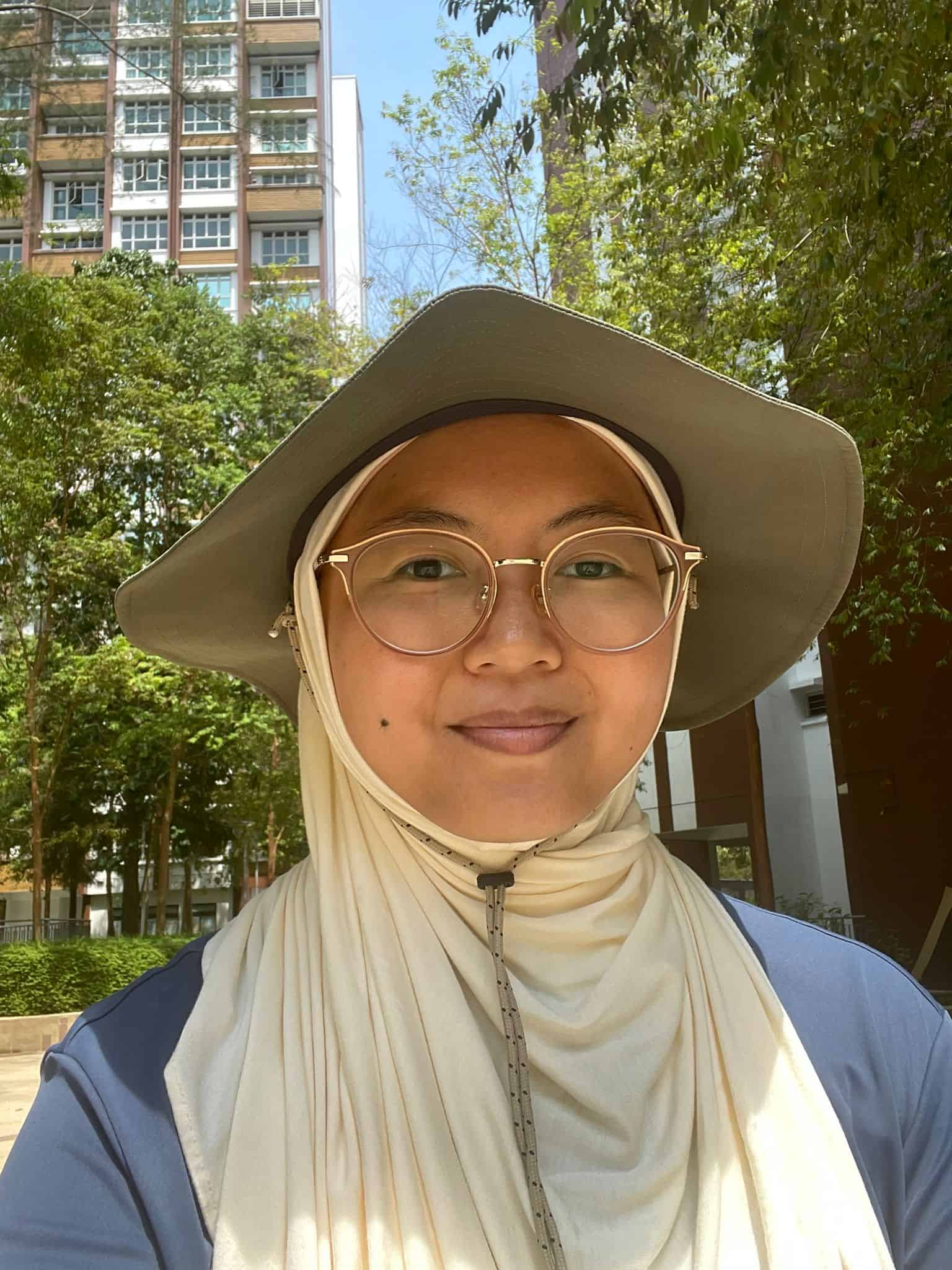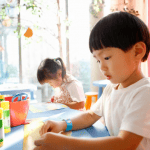
Content > Blogs > Preschoolers > How I Prepared My Highly Sensitive Child for Preschool in Singapore
How I Prepared My Highly Sensitive Child for Preschool in Singapore
- Written By Natasha
- Updated on
Selecting a good preschool in Singapore and helping your child settle can be challenging for parents with sensitive kids.

The early years are a magical time to witness. Embarking on their journey to preschool in Singapore brings fresh challenges for both preschoolers and parents. My daughter was 19 months when she started preschool. Safe to say, leading up to it, I was an anxious mess.
Being a highly sensitive child (HSC), a million thoughts ran through my head – It would be the first time we’ll be parted at extended hours. How will she adapt to school? WILL she adapt? How long will it take for her to ease in? Will her teachers understand her and be able to hold space for her big feelings? The start of school is so much to process for a toddler, and even more so for a HSC (and parent!).
HSCs display big feelings more often than other children, have a hard time with transitions, are slow-to-warm and are easily overstimulated/overwhelmed by new people, places or experiences. If anything, being the parent of a HSC has also taught me is that they process things deeply, are extremely empathetic, and have heightened senses. With lots of care, this makes them amazing learners.
I knew we had a long road in preparing and supporting her through the transition to school, starting 1-2 months prior. This was how I prepared my highly sensitive child for preschool in Singapore.
Reading books on starting preschool in Singapore
Books are the gateway to the world. It’s through books that our daughter knew what to expect in school and even got excited about it (play, eat snacks, read, outdoor time). Books also have a way of fostering closer connections. They can then make positive connections with what they experience in school! Our daughter’s favourites were “I’m Starting Nursery” and “Find Spot at Nursery”.
You can visit National library with your child to find these books. for library locations near new look here
Visiting the school / Meeting the teachers
We were invited by the principal to visit the preschool and got to meet the teachers. As parents of a HSC, who the principal and teachers are matters to us. It gave us confidence that our daughter’s principal was genuinely interested in getting to know her and how we (parents and child) felt about her starting school. We were allowed to visit her class, where she basically saw her book come alive. Her eyes lit up, seeing the class setup, the teacher engaging her classmates, the toys/resources available for her to play, and the mini library she had access to. It was a positive sign, but it didn’t mean she’ll immediately adapt.
(Tip: If not invited to visit, drop the school an e-mail.)
Bringing through school routes and visiting nearby playgrounds
We asked the school for their timetable and started changing routines accordingly. We frequently went through the route to school and brought her to nearby playgrounds, so she got used to seeing kids in school uniforms and increased her chances of interacting with them.
Start with half days
For a very young child who’s never been separated from you, 3 hours would feel like an entire day. And a full-day separation possibly feels like an eternity. Especially so for a HSC.
To ease her in, we started her off on half days. Until she showed signs of adjustment, we slowly extended the hours to a full day. It took us 3 months before our girl was okay with a full day, but that’s what worked for us.
I was also able to do this only because I’m a full-time mum, which gave me the luxury of time to support my child. I imagine it would be much harder for working mums with little room for flexibility.
Keep goodbyes short & consistent
We tried different drop-off styles and have found that the short and consistent ones work better for us. The longer we drag goodbyes, the more the child senses your anxiety. This doesn’t give them the confidence to enter the classroom. Keep it short. Assure them you’ll be back after a certain segment (e.g. “after storytime”). And when you pick them up, give them the tightest hug and let them know you missed them or were thinking of them! Reconnect, reconnect, reconnect. To help our girl shake off school jitters and recentre, after school was full of cuddles and outings to places that bring her joy.
Maintaining a healthy relationship with the teacher
When our children see us trust their teacher, they, too, have confidence in them. We were so grateful the teachers were willing to work with us in helping our daughter adjust. It’s important to keep the teacher informed of your child’s sleeping/eating habits so they can be on the same page. Especially for children with limited language.
Holding space for big feelings
If there was anything I wasn’t prepared for, it was the after-school meltdown. My daughter’s first week in school was our toughest. It’s so much for a young, highly sensitive child to process – having to follow the rules, constantly being told what to do, and getting used to structure. We parents are, after all, their safe space. Make sure your cup is filled as much as possible before receiving them. And if there’s anything I’ve learned, food can do wonders. Our girl loves being surprised with an after-school fruit snack. Why fruits? Because it’s yummy and cools them down.
Lots of free play outside of school
After school, I used to bring my girl straight home to rest. I’ve learned to get her to the playground first to self-regulate and move after what’s possibly an entire day of sitting. Unlike most adults, children are much more instinctive in listening to their body’s needs. They know how to soothe their body (e.g. swinging, sliding, climbing, hanging from monkey bars). These are not just play. They’re intentional play and target different muscles. Also, being at the playground provides them with the necessary vestibular and proprioceptive input.
Not only does it regulate their emotions, but the movement is also necessary for supporting their learning. (e.g. different muscles are being activated to strengthen fine motor skills, which are needed to learn to write and do daily tasks)
Allowing them mental health days
After school, I used to bring my girl straight home to rest. I’ve learned to get her to the playground first to self-regulate and move after what’s possibly an entire day of sitting. Unlike most adults, children are much more instinctive in listening to their body’s needs. They know how to soothe their body (e.g. swinging, sliding, climbing, hanging from monkey bars). These are not just play. They’re intentional play and target different muscles. Also, being at the playground provides them with the necessary vestibule and proprioceptive input.
Not only does it regulate their emotions, but the movement is also necessary for supporting their learning. (e.g. different muscles are being activated to strengthen fine motor skills, which are needed to learn to write and do daily tasks)
Selecting a preschool in Singapore is not a great challenge as there is plenty of choice. From MOE-owned to private ones, parents can choose any nearby school and dig a bit deeper into the school’s values to see if it will be a good fit for their child’s temperament.
Explore Klassbook for more Classes
To explore more Preschool classes, go through our list of classes here. Why not start with a trial class to gauge your child’s interest?

Natasha is a stay-at-home mum with a 2.5-year-old girl. She was previously in social service for 1 years. She advocates for and practices child-led learning and respectful parenting.
In this Article
Loved Our Articles? Subscribes To Get Updates Directly To Your Inbox!
Related Articles


10 Holiday Camps For Year-End School Holidays In Singapore
October 25, 2023
Learning Hindi language – Hindi Society Singapore and other Hindi Tuition centres
September 7, 2023
Best parent-accompanied classes for preschoolers in Singapore
September 4, 2023
How Learning Second Language Works Wonders for Preschoolers
September 4, 2023
